Index


Review: Silent, OCed card with extra headroom
Following up on their GTX 680 Beast and Ultra Charged cards, Point of View / TGT decided to offer even more to the enthusiast bunch. So, if 2GB isn’t enough for you, you should know that PoV / TGT‘s offer now boasts the GTX 680 Ultra Charged with 4GB of memory. Note however that other than the memory, the card is identical to the GTX 680 Ultra Charged, meaning it packs a GPU factory overclocked by 105MHz. Those who crave more can always go for the GTX 680 Beast, whose GPU is factory overclocked by 157MHz.
The high clocks are not a problem thanks to the special triple slot cooling. TGT opted for hand selected low leakage chips in order to provide maximum performance. This ensures that auto-overclocks are maxed out and allows for superior overclocking headroom.
So, the GTX 680 Ultra Charged 4GB’s base GPU clock stands at 1111MHz (Boost clock at 1176MHz) while the memory is at 1502MHz (6008MHz effectively).
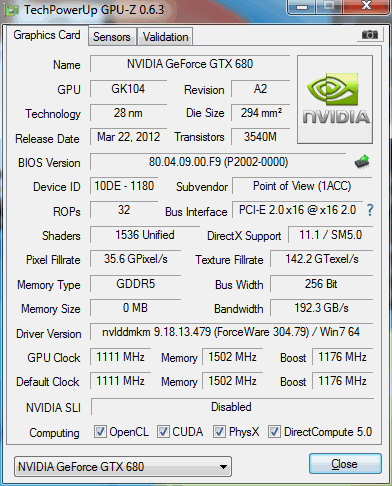
GTX 680 Ultra Charged comes with no special extras – you get a driver CD and a user manual. The box is tough, with a design along the lines of PoV/TGT’s earlier designs. We’d love to see a gift game with premium cards, but it seems like those days are gone.
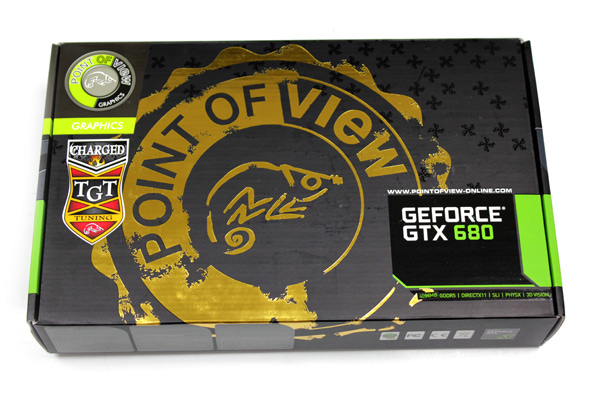
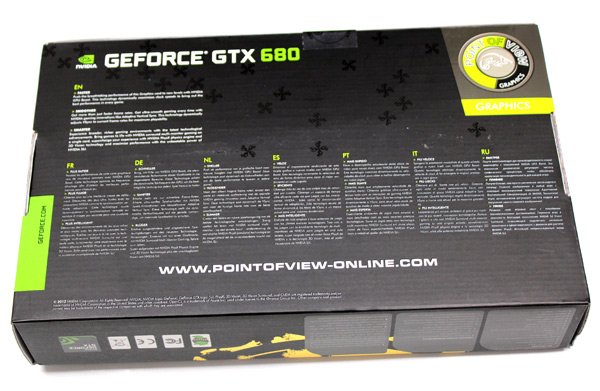
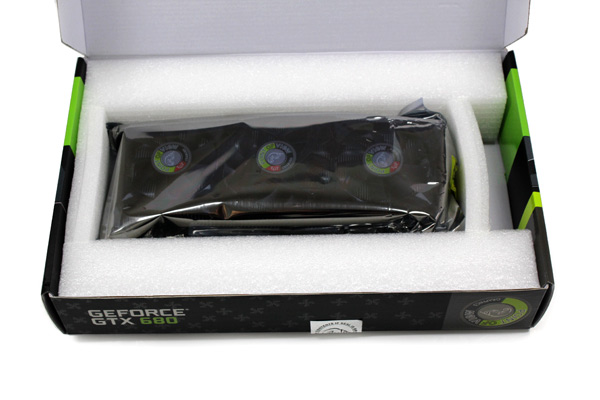
GTX 680 Ultra Charged 4GB graphics card uses large but efficient cooling. We’ve had the chance to see it in action on the GTX 680 Beast and GTX 680 Ultra Charged 2GB cards and although it did a good cooling job, what we liked the most was its silent operation.

Seeing as how the Ultra Charged 4GB and Ultra Charged 2GB only differ in memory, we expect the cooler to repeat its earlier feat.
The fans are enclosed in a plastic mask, which is easily removable if you want to clean them. The cooler has different fans - the central fan is a 9cm one while the other two are 8cm in diameter. Size isn’t the only difference as the propellers were designed differently as well.

All three fans are connected via a single power connector, so Auto or manual RPM settings introduce changes on all three fans. The three fans make sure that every part of the heatsink is nice and cool.
The heatsink is split in two parts, with five heatpipes going through - two go towards the I/O panel, while three go in the opposite direction.

Heatpipes start on in the pretty large copper base. The base is massive, partly because the cooler is held in place only with four screws, which again go through the base. The design is pretty tough and we didn’t hear/see any vibration due to the number of fans. PoV / TGT used foam-like pads in two places between the heatsink and PCB, in order to ensure a proper and stable fit with no vibration noise.

PoV/TGT strapped the card with a heatspreader for memory and other low profile components on the front PCB. TGT’s backplate can be found in the back, although it doesn’t touch the memory so it’s questionable whether it improves cooling performance. However, it prevents the PCB from warping and definitely makes the card look better.

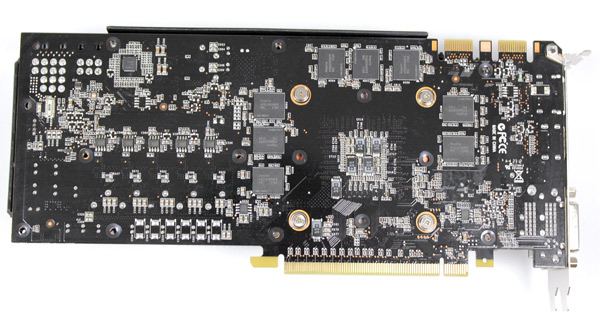
The GTX 680 Ultra Charged comes with 4GB of GDDR5 memory. The chips come from Hynix (model No: H5GQ2H24MFR-R0C) and are rated at 1500MHz (6000MHz GDDR5 effectively).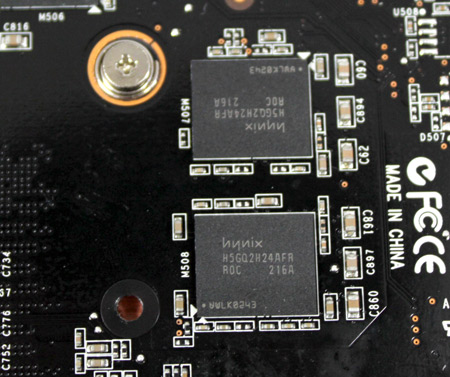
Reference GTX 680 cards draw power via two 6-pin connectors. Factory overclocked GTX 680 Ultra Charged has one 6-pin and one 8-pin power connector. Point of View / TGT uses five phase PWM design, one phase more than on the reference card.

GTX 680 Ultracharged comes with two dual-link DVI outs, but only one is analog VGA-out capable. The VGA-out requires using the bottom DVI – the one in line with HDMI and DisplayPort connectors. Nvidia made sure not to lag behind the competition so Kepler based cards can run up to four displays simultaneously.

The card has two SLI connectors, which means Quad GPU is possible. Note however that being three slots wide, finding room for four GTX 680 Ultra Charged cards will be a challenge.
Motherboard: EVGA X79 FTW
CPU: Sandy Bridge-E Core i7 3820 (3.6GHz)
CPU Cooler: Thermalright HR-02 (Thermalright-Europa Distri www.PC-Cooling.de).
Memory: 8GB ADATA DDR3 1600 XPG Gaming series
Harddisk: OCZ Vertex 2 100 GB
Power Supply: CoolerMaster Silent Pro 1000W
Case: CoolerMaster Cosmos II Ultra Tower
Operating System: Win7 64-bit
Nvidia 304.79-desktop-win7-winvista-64bit-english-beta
AMD 12-6_vista_win7_64_dd_ccc.exe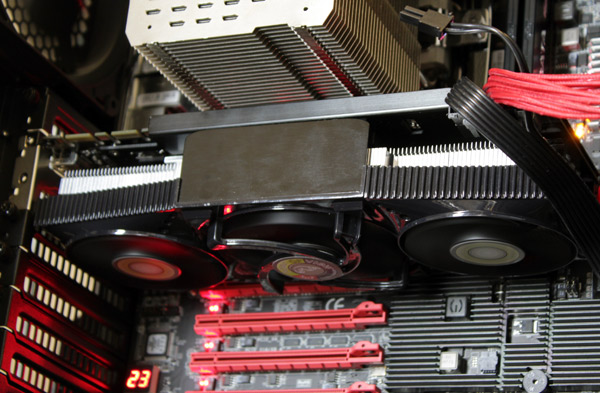
3D Mark11
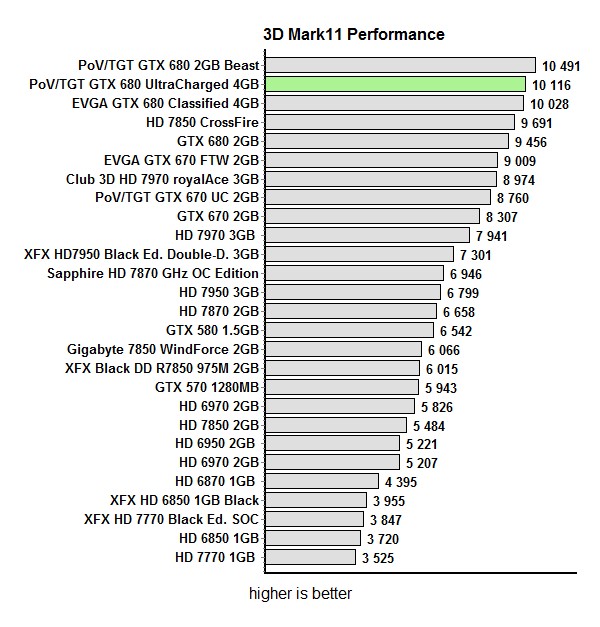
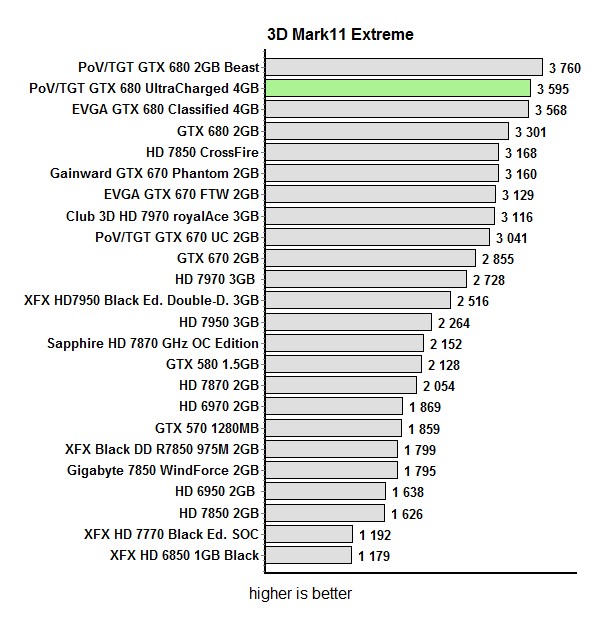
Aliens vs Predator
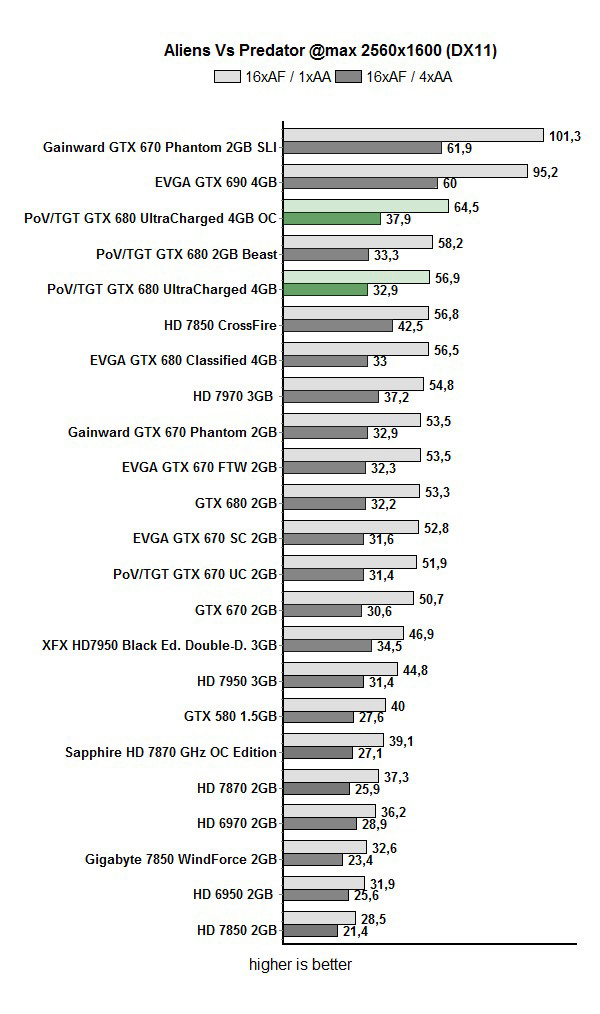
Crysis 2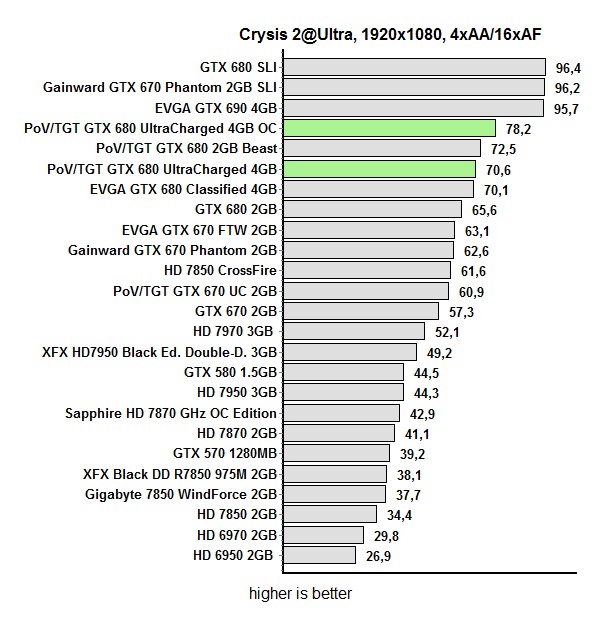

Metro 2033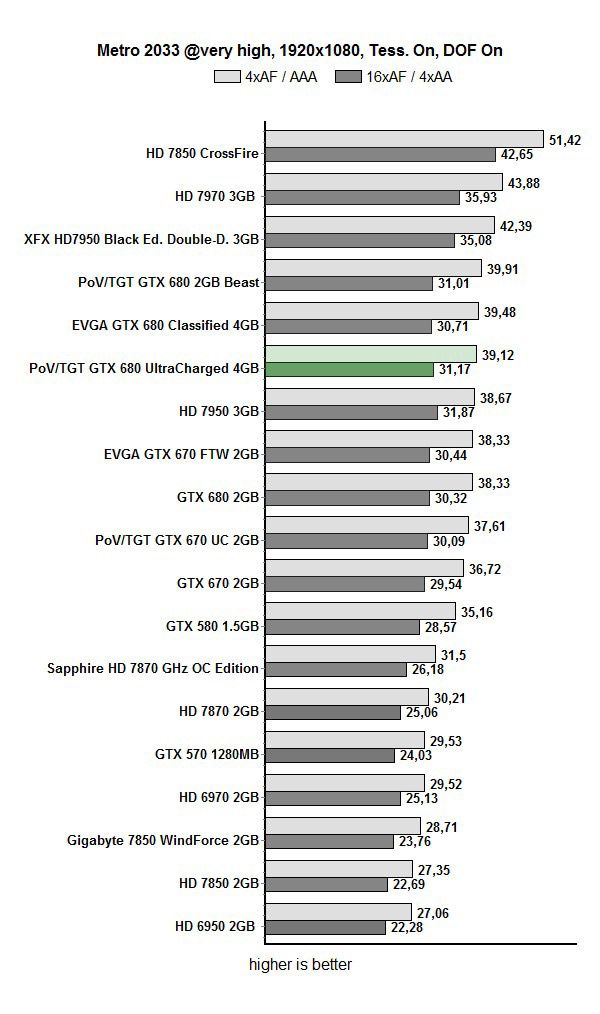
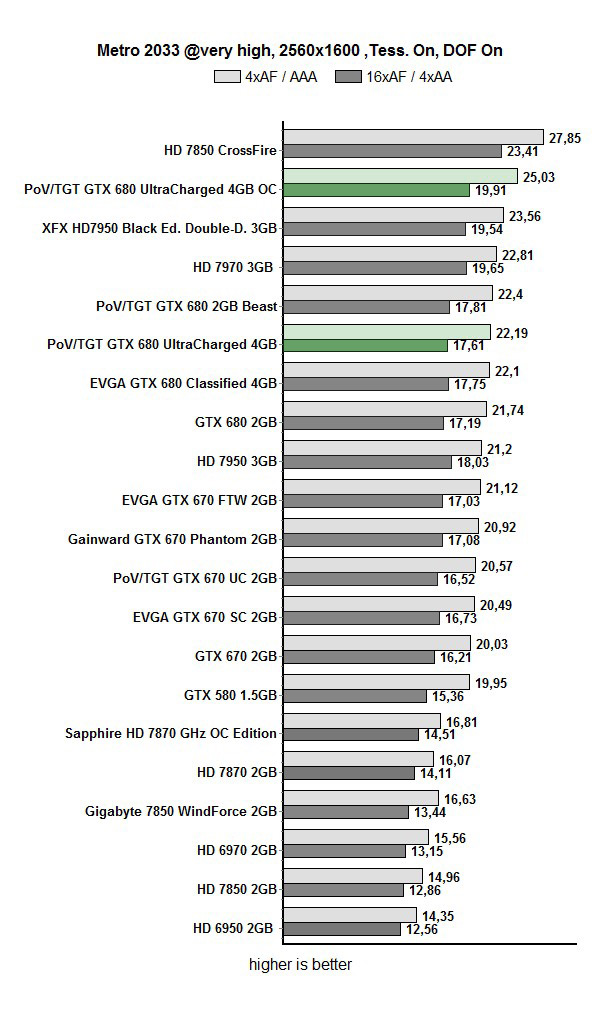
Unigine Heaven
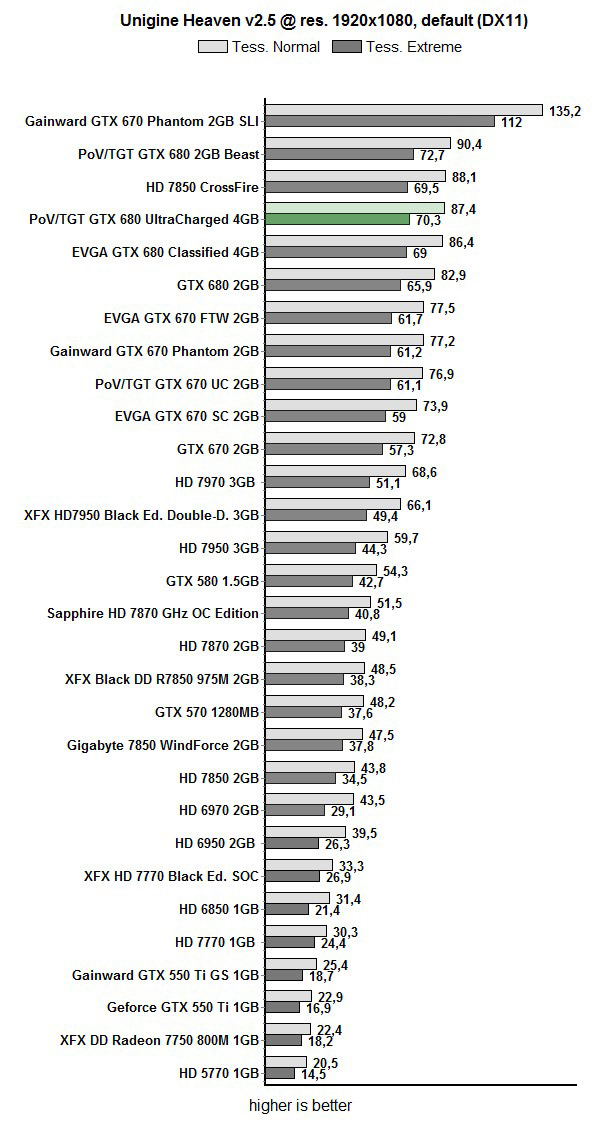
We must admit that we had great expectations when it comes to overclocking, since TGT claims it used handpicked low leakage chips. Such chips do better with auto overclocking and tend to deliver higher maximum clocks, but should provide superior overclocking headroom as well.
Overclocking the memory was quite interesting, seeing as how the card has 4GB of memory. Naturally, doubling the number of memory chips doubles the chance of one of them turning out overclocking unfriendly, but luckily, all of them ran flawlessly, even after our 225MHz overclock (900MHz effectively).
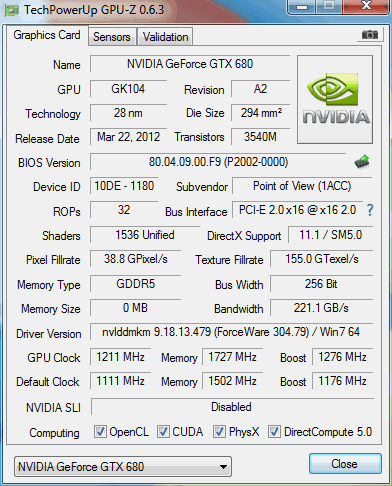
We’ve noticed that the Power Target is a bit higher than on the reference design, but the voltage was left at reference values.
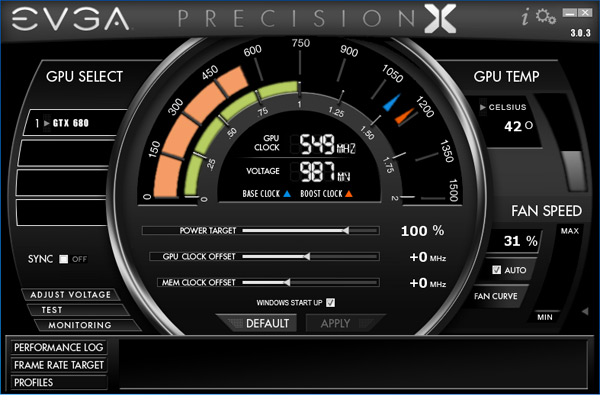
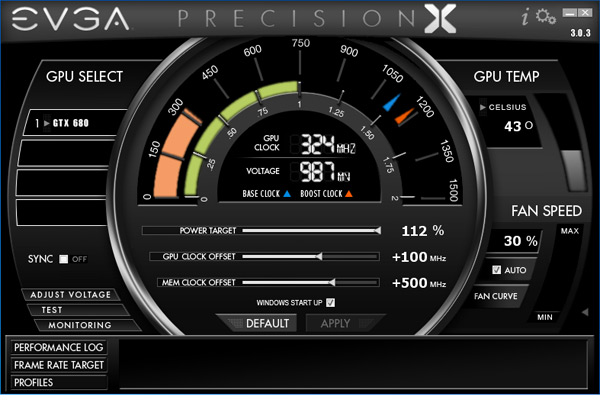
Before we move on, we should say that we left the fans in AUTO mode. The cooler ran so well that there was simply no need for it and the fans remained quiet even after our overclocking. Thermal throttling occurs at above 79°C, but the GTX 680 Ultra Charged never exceeded 72°C – that’s right, not even after overclocking.
Squeezing out maximum clocks, and in turn performance, from the GK104 requires a lot of attention. Below is a clear example of when to use the Power Target slider.
Once we overclocked the GPU by +70MHz, we noticed that auto-overclocking figures tend to oscillate somewhat, as you can see on the picture below. Quality GPU and cooling prevent more serious changes but we chose to stabilize the clocks by dragging the Power Target slider far right, allowing for maximum TDP. It worked and, as you can see from the second picture below, the GPU clock is nailed to 1269MHz.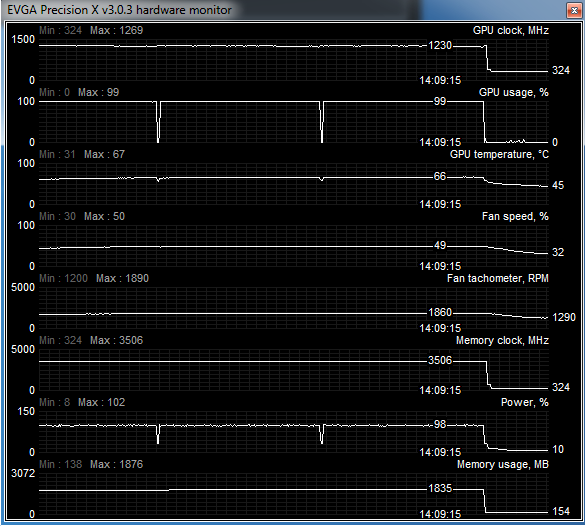
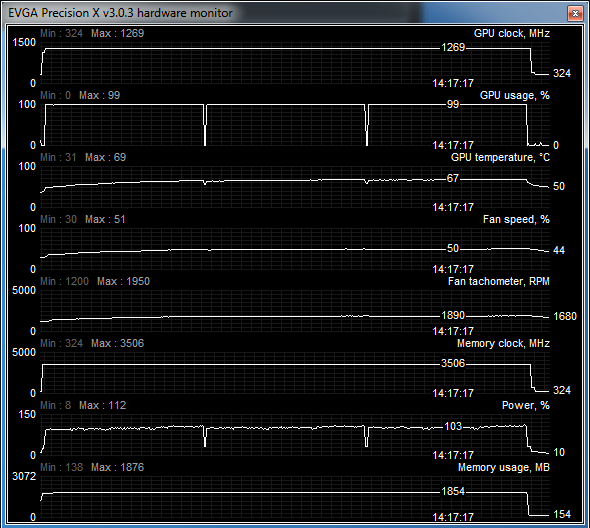
The next photo proves that TGT really chose low leakage chips. Not even 100MHz extra turned out too much for this card. The maximum auto-overclock was 1289MHz, and as you can see from the picture below, the GPU ran at this clock the entire time.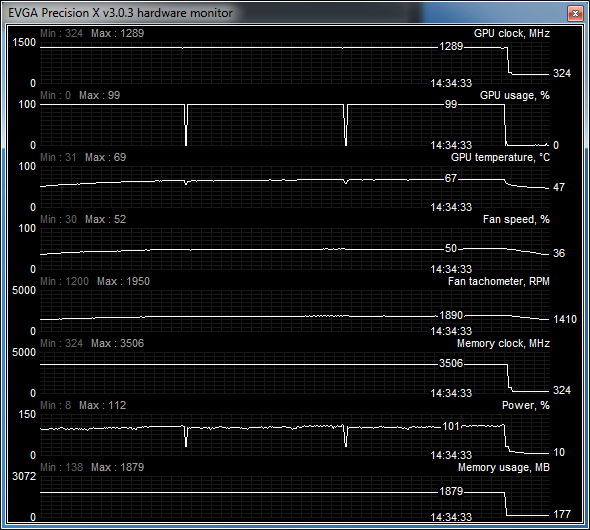
We didn’t have much time on our hands and thus couldn’t check, but we’re pretty sure you could squeeze out a bit more from this card.

If you read the review in detail, you know that the cooling is excellent. First and foremost, it remained quiet when the card was working hard and it didn’t even flinch after our 100MHz (205MHz higher than reference) – golden silence. Note that such performance means we never utilized the cooler to its max, i.e. we didn’t speed up the fans.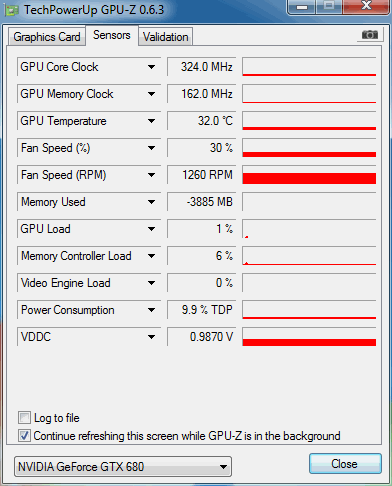
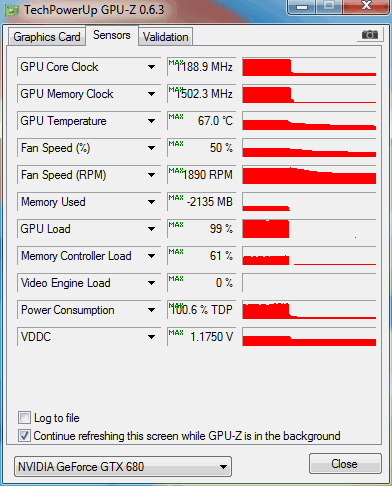
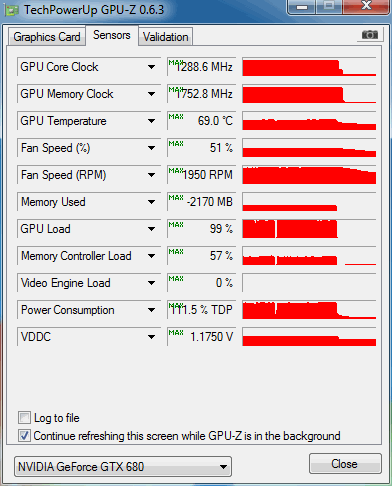

Point of View / TGT found a perfect formula for cooling overclocked GTX 680 (GK104 GPUs). There was no secret recipe – massive cooling did the trick.
If you look at the cooling performance, it will be clear why TGT chose it to cool the fastest GTX 680s. The cooler was more than up to the task throughout our tests. We overclocked the core by another 100MHz (205MHz higher than reference) and the memory by 225MHz (900MHz effectively), but the cooler hardly noticed.
The cooling does however have one shortcoming – it takes up three slots. While you may find enough room for SLI or three-way SLI in most rigs, you can just about forget about fitting a Quad SLI setup.
Games don’t seem to notice the doubled memory, but this does not mean that future games won’t benefit from it. The good news is that 4GB of memory didn’t negatively affect GPU overclocking.
The GTX 680 Ultra Charged 4GB graphics card uses low leakage chips handpicked by TGT, and the overclock to 1211MHz (Max Boost clock 1289MHz) confirmed it. Note that the GTX 680 Beast’s Base GPU clock went up to 1223MHz, and we wouldn’t expect anything less from the Ultra Charged cards, provided you’re willing to put some work into it.
The 4GB version goes for €60 more than the 2GB one, but this is not only due to more memory – PoV/TGT’s handpicked low leakage chips provide excellent auto overclocking and further overclocking headroom, making the GTX 680 Ultra Charged 4GB pack one serious punch.




